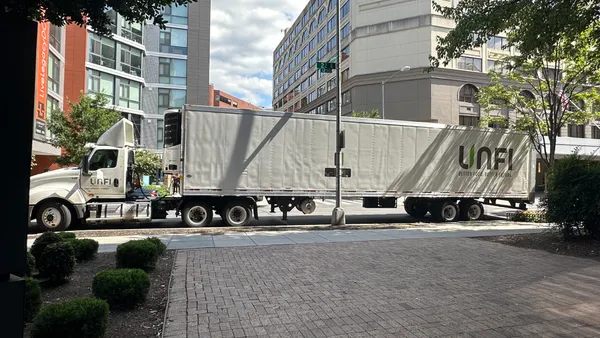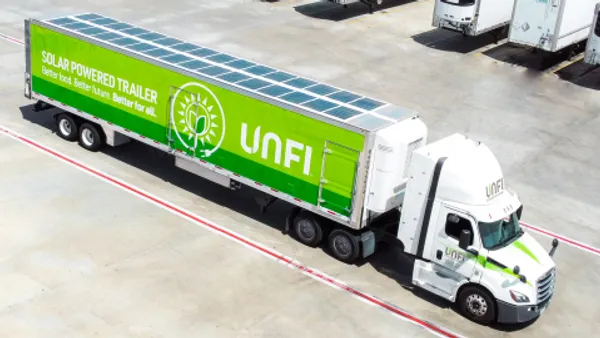Grocers, traditionally focused on the “green” of profits, are increasingly recognizing that sustainability initiatives can support both kinds of “green,” bringing environmental benefits as well as potential long-term financial gains. However, they’re also at a crossroads: As environmental awareness increases, how can they balance this pressing need with the relentless pressure to optimize profitability?
The industry recognizes that the imperative to adopt sustainable practices and equipment upgrades has become increasingly urgent. That's driven by both consumer sentiment and the need to comply with pending regulations. One thing is clear: Delaying upgrades is not an option as the deadlines advance.
In many cases, grocers are worrisomely ill-prepared for the impending phasing out of hydrofluorocarbons (HFC) refrigerants, finds Daniel May, PMP, Manager, Engineering and Project Management at AHT Cooling Systems, a leading manufacturer and innovator of waterloop refrigeration and freezer systems.
Here’s what grocers need to know to chart a path toward a greener, more profitable future.
Pending regulations grocers must address
With numerous changes on the horizon, it can be challenging to know which regulations are applicable to a particular grocer as some pieces of legislation only affect specific states. May says that the one everyone must heed is the American Innovation and Manufacturing (AIM) Act, which authorizes the Environmental Protection Agency (EPA) to address HFCs by setting a maximum Global Warming Potential (GWP) limit.
According to the final ruling for the Technology Transition Program, signed on October 5, 2023, restrictions will be phased in from January 1, 2025, to January 1, 2028. The update will allow retailers who have high GWP systems purchased before this compliance date to maintain these existing systems throughout their useful life. However, a retailer who wants to replace or expand their refrigeration system after the compliance date must adhere to the GWP limits pertaining to their system type.
“At the heart of it, after January 1, 2025, a food retailer should move to a low GWP system if they are building a new store or renovating an existing one,” May says.
Clearly this upcoming mandate will necessitate big changes among most existing systems, thus driving demand for AHT‘s glycol waterloop systems, which use the refrigerant R-290 as a natural option that satisfies these low GWP requirements.
In addition to that overarching mandate, two other pending regulations grocers should watch come from:
- California Air Resources Board (CARB), which mandates a reduction in HFC emissions by 40% below 2013 levels by 2030. While this particular legislation only applies to California, the state historically serves as a bellwether for policies, particularly in environmental matters. This implies other states could be likely to adopt comparable regulations
- Significant New Alternatives Policy (SNAP) Rule 26, which modified the use of 10 types of refrigerants, including noting that R-290, the environmentally friendly refrigerant alternative in AHT’s systems, would be exempt from the existing venting prohibition.
While the dates might appear remote as retailers deal with the demands of today, May urges grocers to avoid playing the waiting game, noting that it might become even more difficult and costly to get access to cases that are compliant with pending regulations and the market force of supply and demand potentially comes into play for those who haven’t started exploring alternatives to HFCs.
Furthermore making the change today will future proof your cases against emerging regulations. “Retailers are excited that we’re nearing a time period in refrigeration when you're no longer are going to have to worry about additional regulations once they segue to a natural refrigeration option,” May said.
Making the case for a reduced carbon footprint
Going green can also earn favor with customers. A McKinsey report on the State of Grocery in North America 2023 underscores that enhanced environmental practices must be a key part of core business operations, given the number of sustainability-related regulations facing the industry, but it also asserts that consumers are following through with their own eco-friendly goals in their purchasing behavior, bringing benefits to grocers who embrace these changes.
Switching to AHT’s glycol waterloop solution can also help with operational costs. Its ability to harness heat recovery technology means that heat which is being removed from the case can be redeployed to another purpose, such as heating the store or using it in a hot water tank, rather than wasting it. “When you redeploy the heat, you reduce the operational load of your heat pump, and you'll quickly see that in your utility bill,” May said.
AHT’s waterloop units can also help stores save money by reducing refrigerant leak rates to less than 1.5%. As a self-contained unit that’s hermetically sealed, leaks can be contained to that unit instead of affecting the entire system. Overall AHT’s leak rate is minimal, while industry refrigeration leak rates for remote rack systems run on average in excess of 12%.
This efficiency has been attractive to Hames Corporation, a wholesale grocer in Sitka, Alaska, says Jade Culbertson, president and managing partner of Culbertson Energy & Infrastructure, LLC. “On average Alaskans pay some of the highest utility rates in the nation so in a period of continually rising costs, we felt the need to address this by exploring more efficient refrigeration systems,” Culbertson explains.
Culbertson says that the AHT systems will play a key role in addressing the EPA’s and the state of Alaska’s desire for low GWP systems and restrictions on leakage. “We can see the regulatory environment only getting more stringent so going all-natural helped Hames to get ahead and be prepared for increased regulation in the future,” he says. “By using a natural refrigerant like R-290, we are setting a great example for many others here to follow to protect the environment and beautiful paradise of Alaska.”
Seize the moment to future proof your cold case
AHT’s state-of-the-art refrigeration technology can help grocers gain an advantage as they grapple with impending regulation and aim to meet the preferences of consumers.
“Progressive grocers taking a proactive approach will reap the benefits,” says May. “At AHT, our goal is to foster strong collaborative relationships as we equip our customers with the tools and knowledge they need to thrive today—and tomorrow.”
Visit AHT Cooling systems to find out how waterloop systems can future proof your store today.










